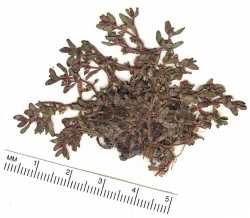|
|
Origin:
Native
Life Cycle:
Annual
General Desc:
Emergent on wet surfaces (substrates); erect to prostrate (lying flat on ground); densely mat-forming; stems often rooting at the nodes; often reddish. Species of this genus often difficult to distinguish, seeds offering the most specific characteristics.
Identification notes: Leaves reddish-green, can be slightly notched at tip, leaf stems erect; stipule margins toothed; flowers, 2 to 3 sepals, rarely 4, 3 to 4 petals, 3 stamens; seeds in 3 to 4 chambers, angular, oblong or cylinder-like, curved, 16 to 35 pits per row.
Height:
Up to 6 inches
Habitat Description: Found along edges of ponds, lakes, pools or slow streams, on wet sand or muddy shores, ditches, shallow vernal pools (appearing in spring).
Plant Communities:
Riparian, Disturbed Areas
Elevation: 5000 - 8000 feet
Color:
Pinkish-white to reddish
Shape:
Regular not in clusters
Tubular:
N
Flowering Period:
May - Sep
Description:
1 or 2 flowers per node of stem; broad petals, pinkish-white to reddish; 2 to 3 sepals (if 2 sepals then equal size, if 3 sepals then 1 sepal smaller); 3 stamens opposite the sepals, 3 styles emerging from ovary.
Leaf Color:
Reddish-green
Leaf Type:
Simple
Leaf Shape:
Narrow
Leaf Margin:
Smooth
Leaf Attachment:
Opposite
Leaves Clasp:
N
Hairs:
No
Spines:
N
Leaf Description:
Stems erect or prostrate on ground; leaves opposite, simple, reddish-green, short-stalked, tips blunt to notched, 3/4 inch to 6 inches long.
Fruit Type: Capsule
Fruit Notes: Capsules, 3-chambered locules (the cell of an ovary containing the seeds).
Seed Notes: 10 to 20 seeds per locule; straight, slightly curved or cylindrical (long and round); pitted in longitudinal rows (along length of seed), 16 to 25 pits in each row.
|
|
